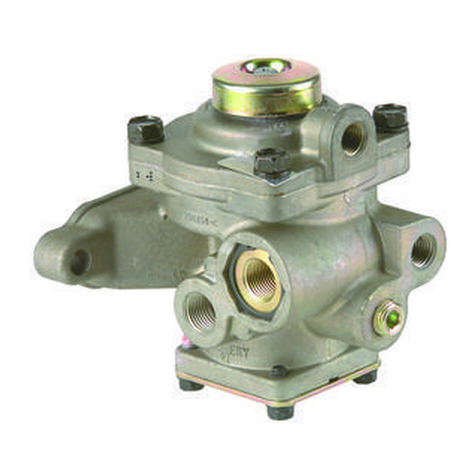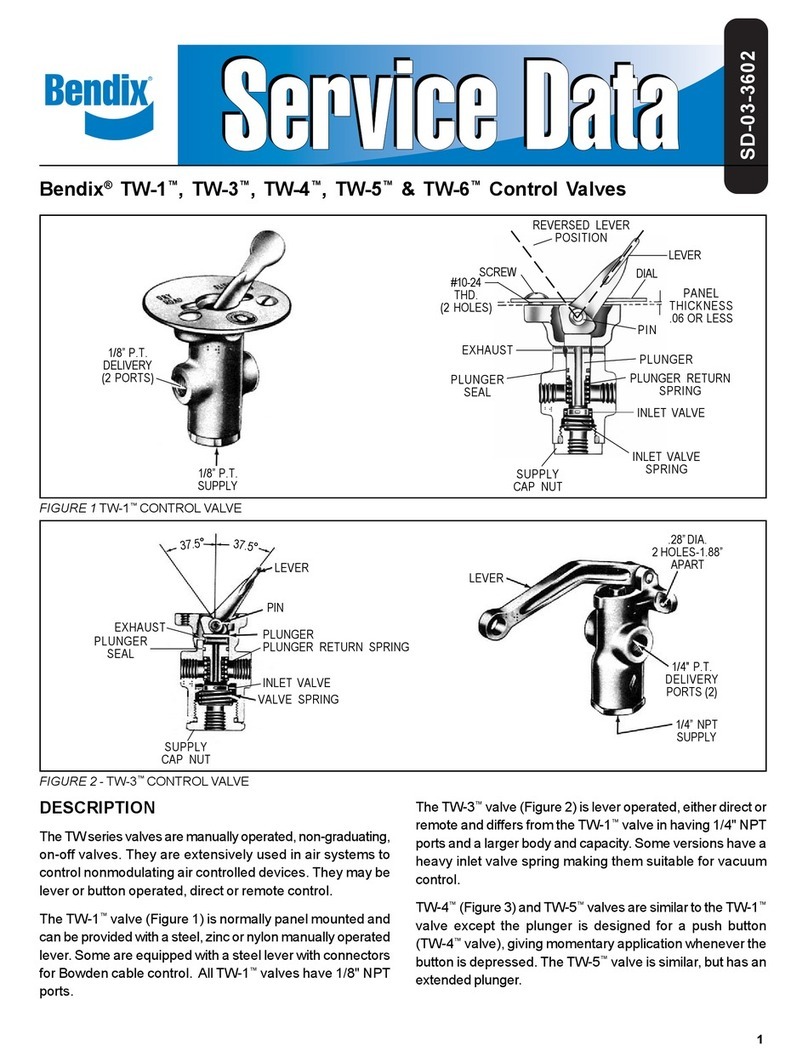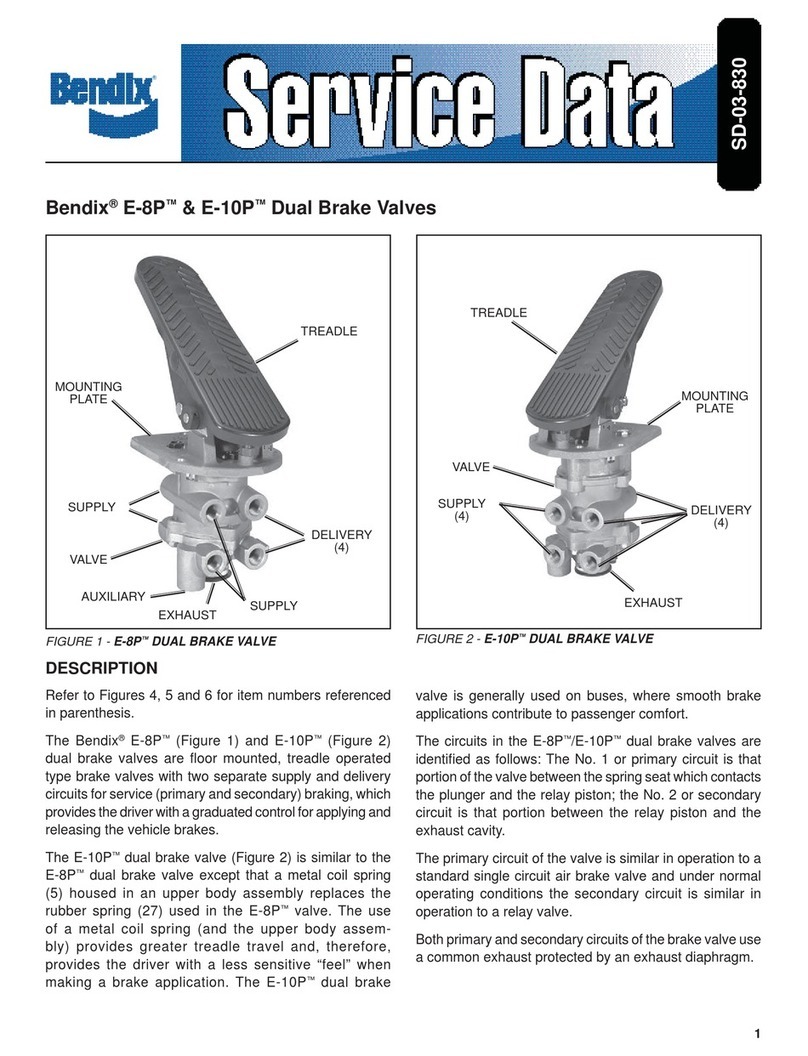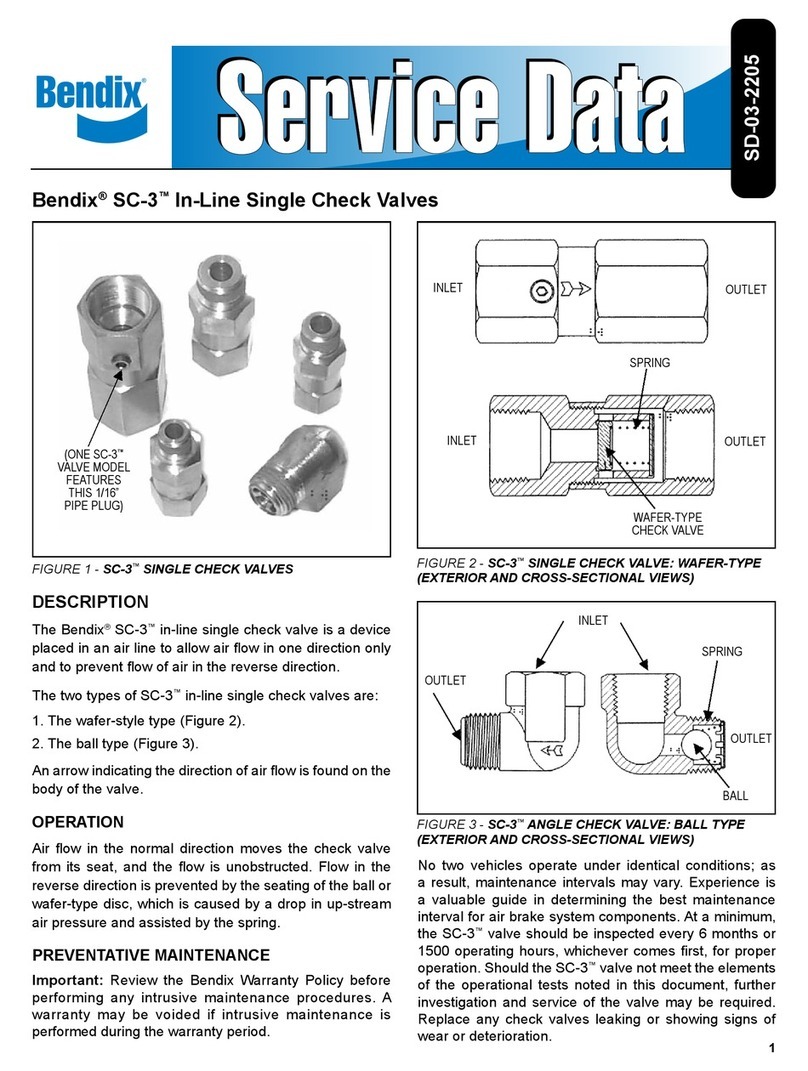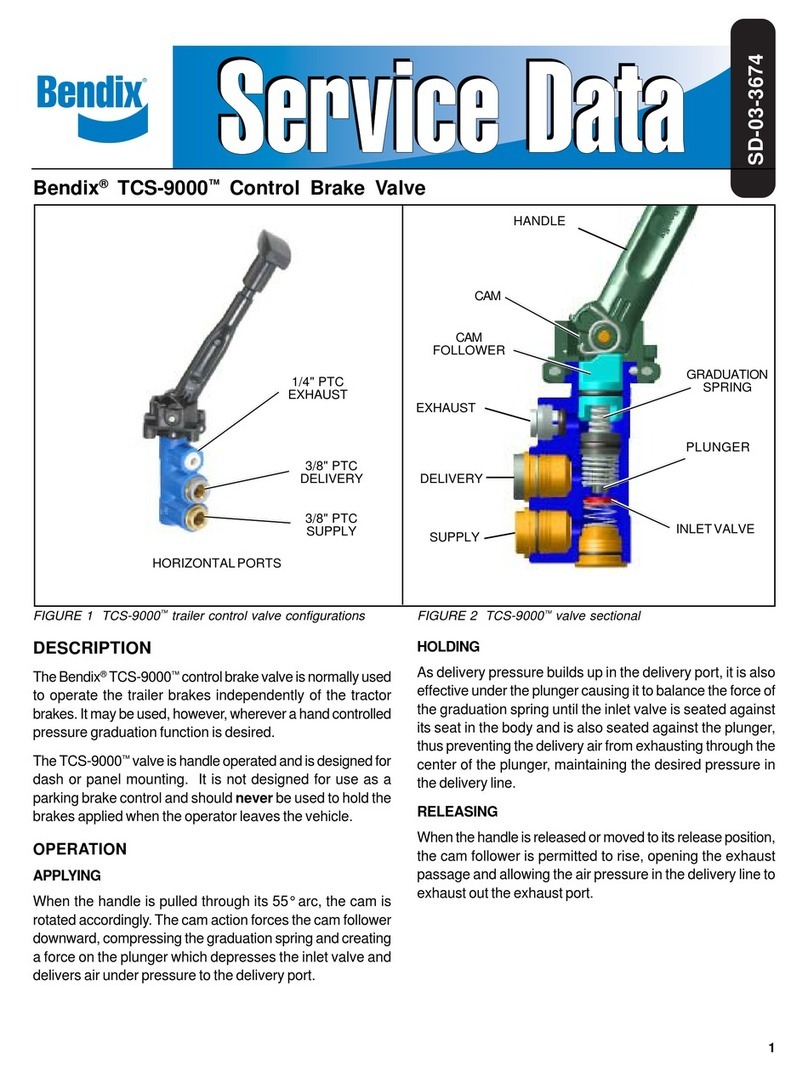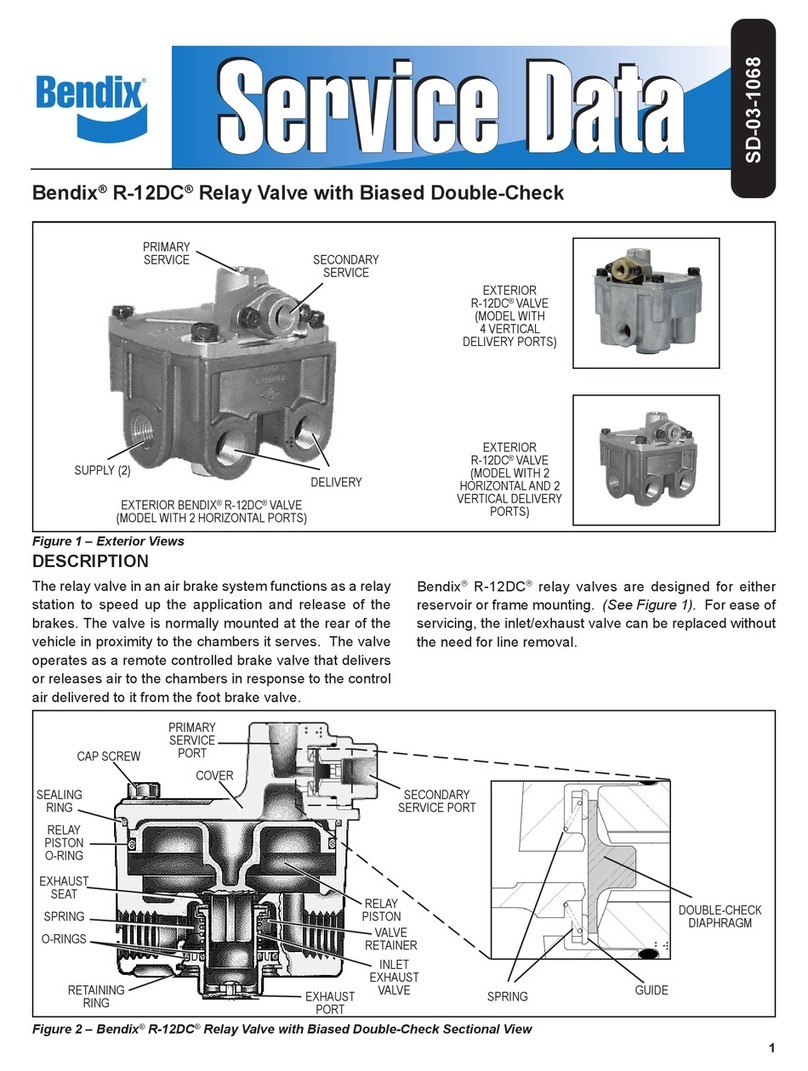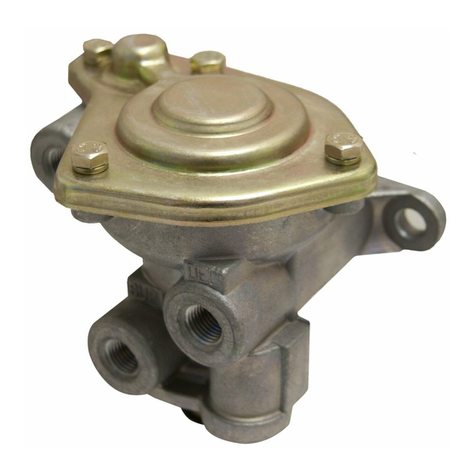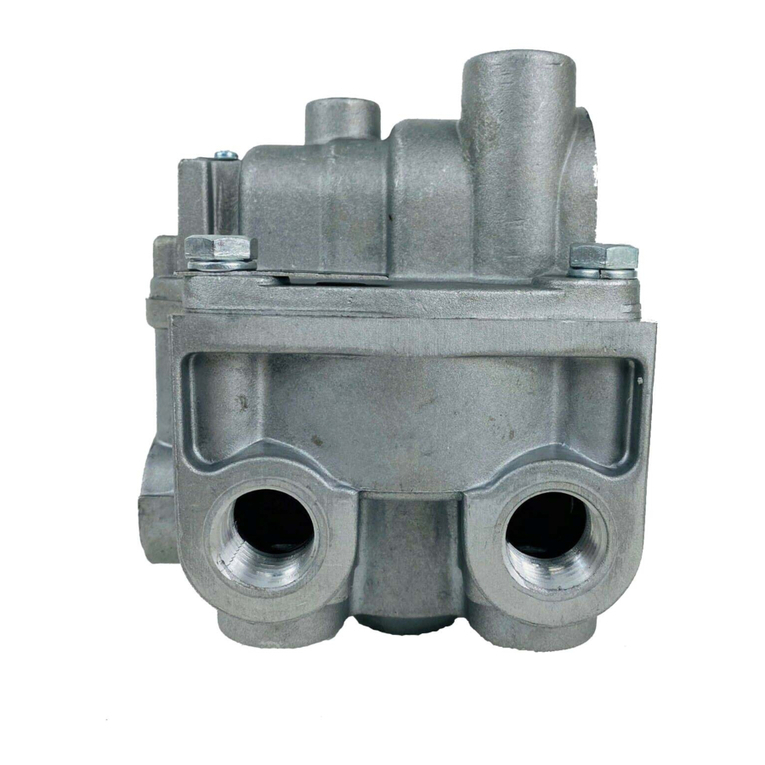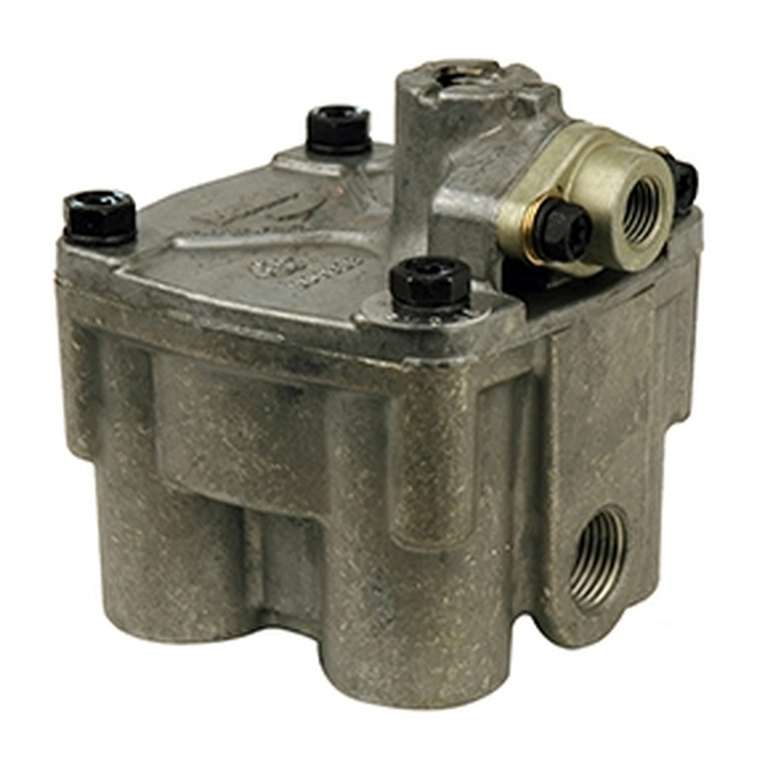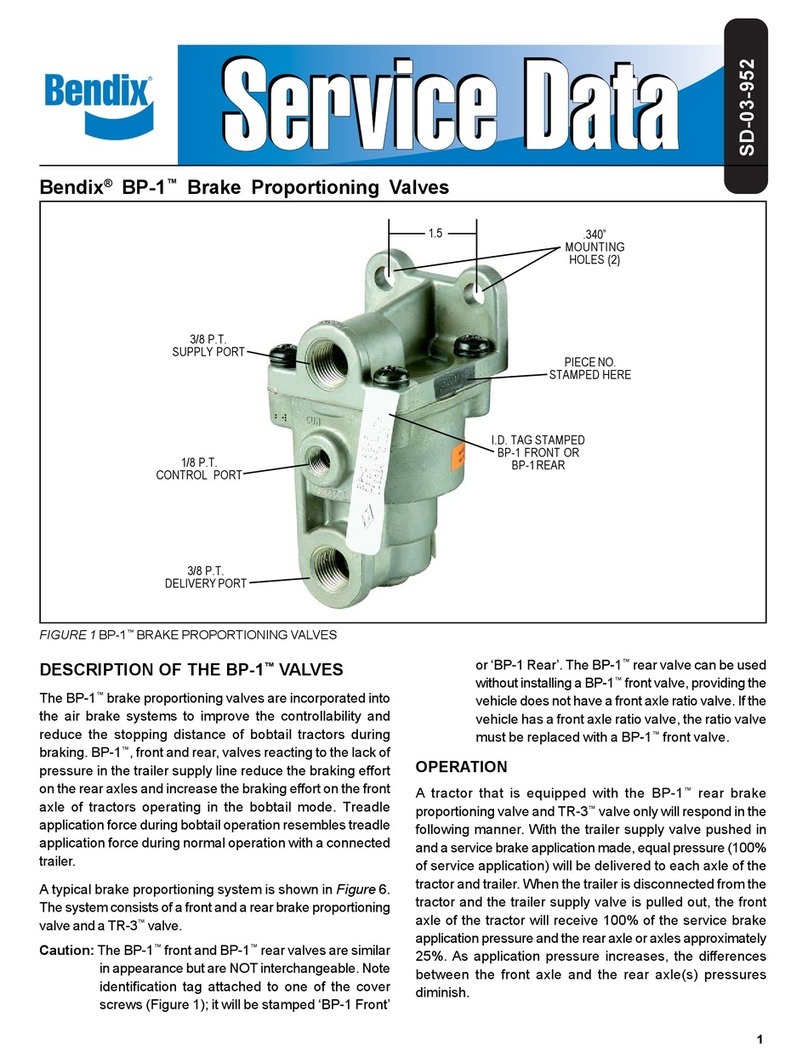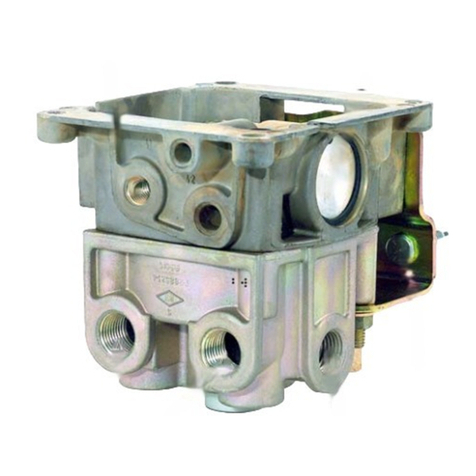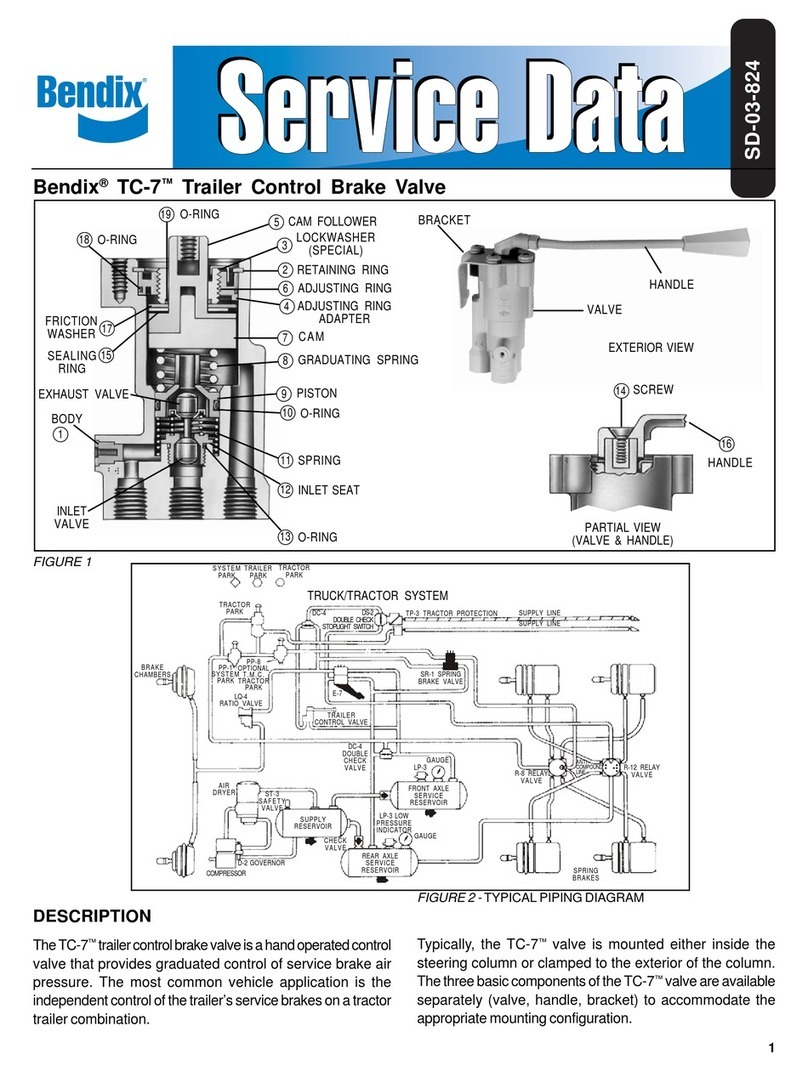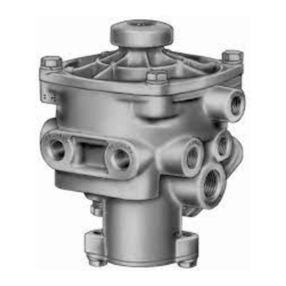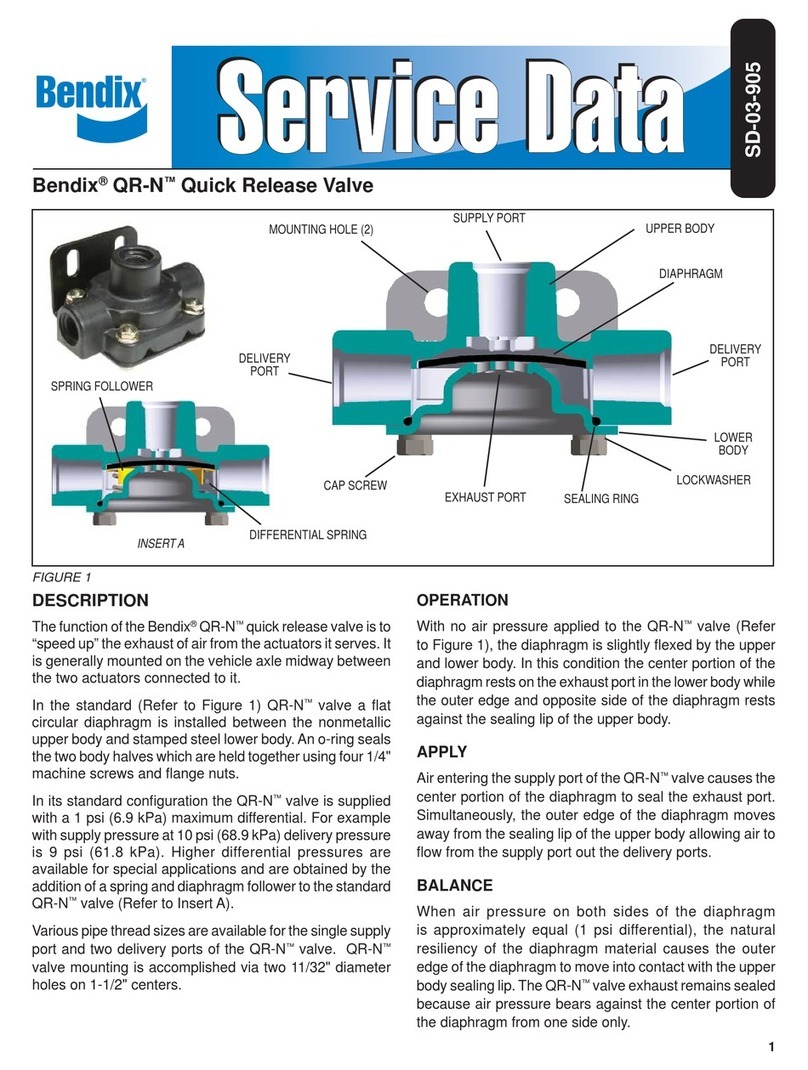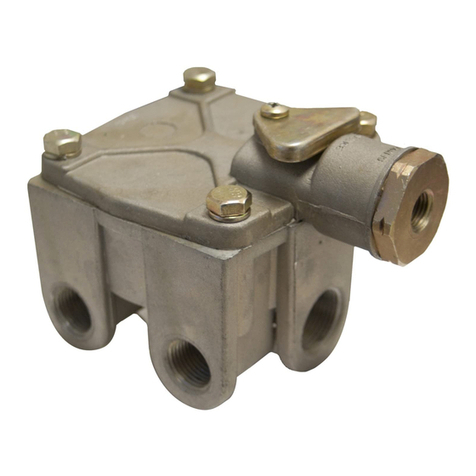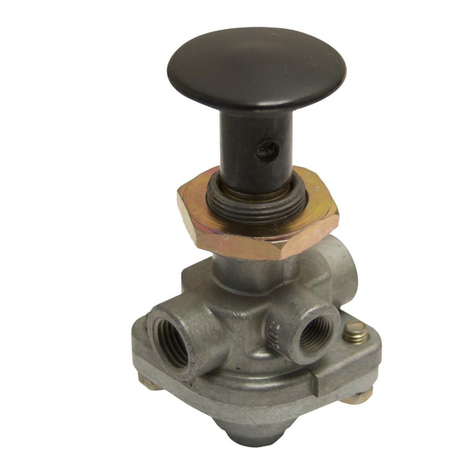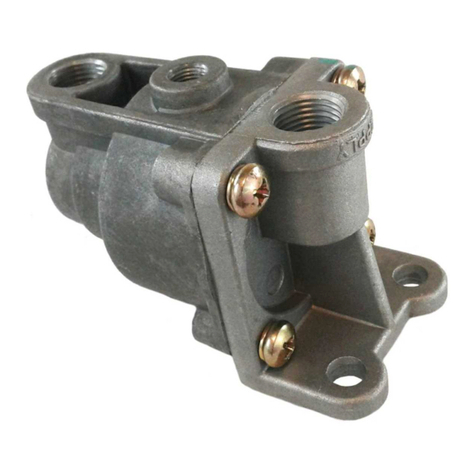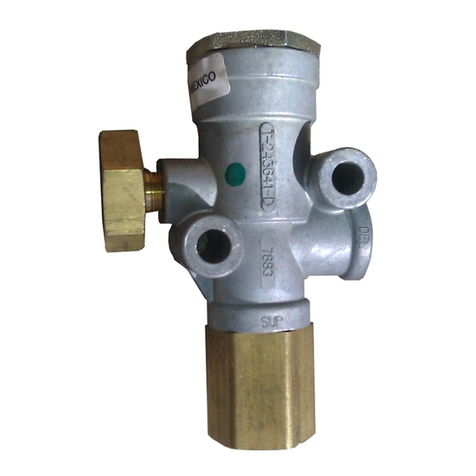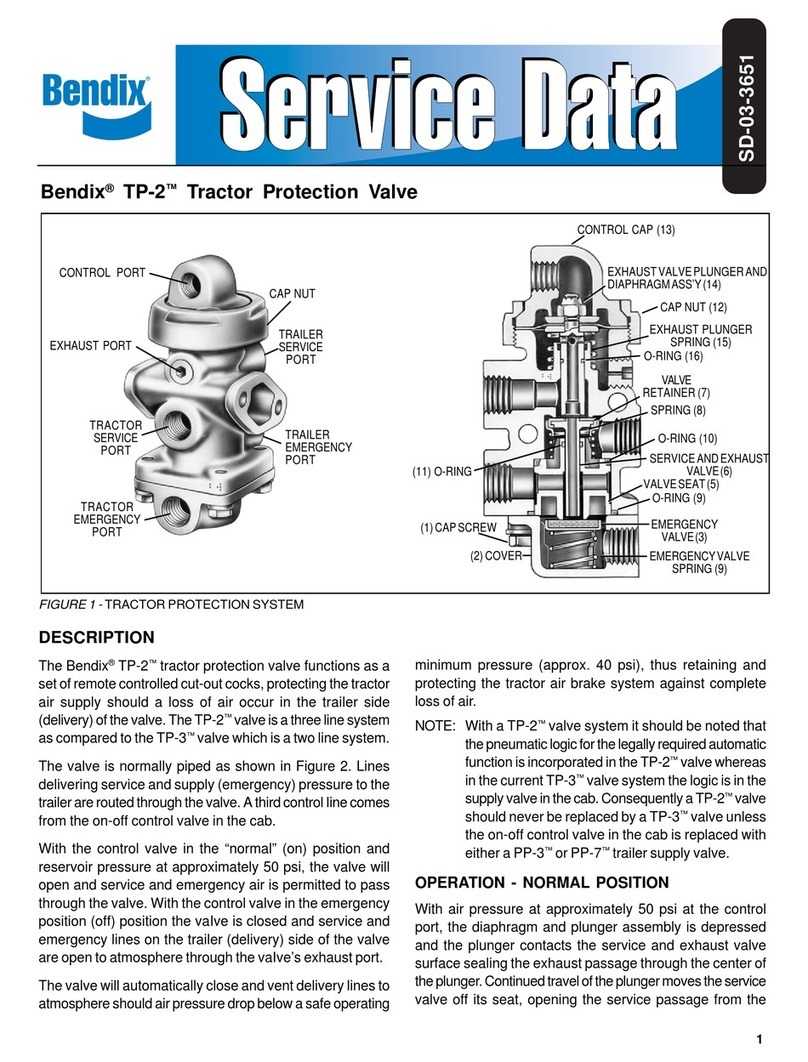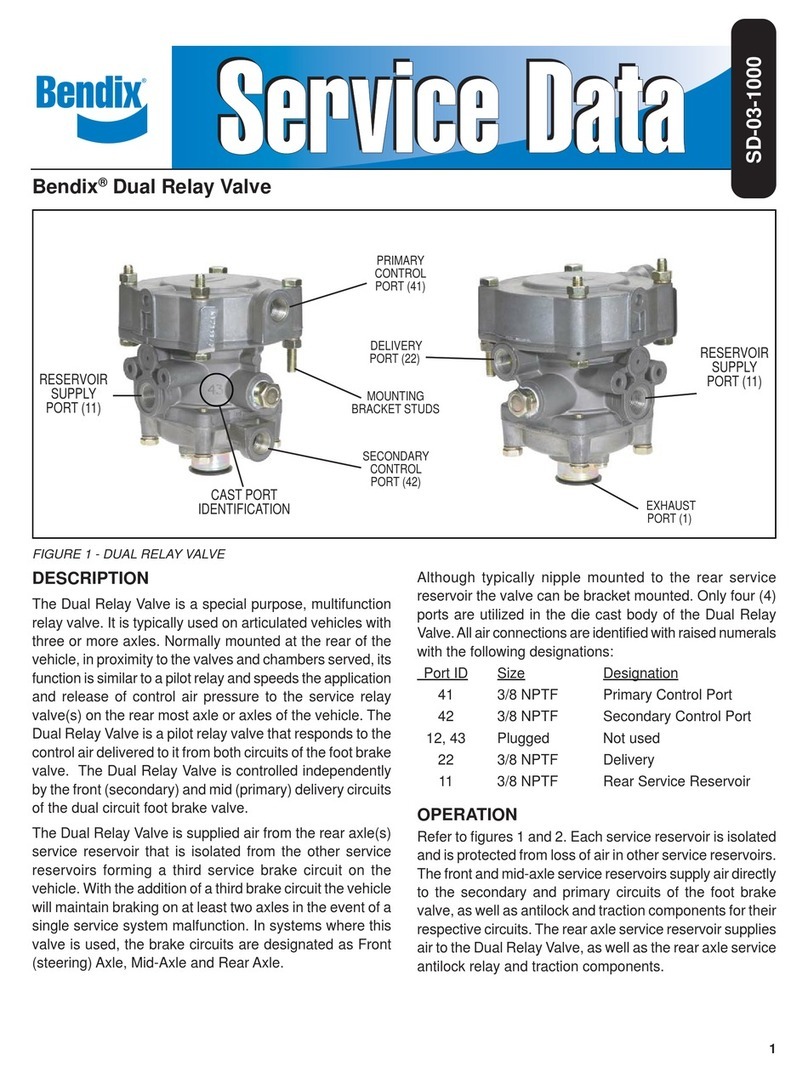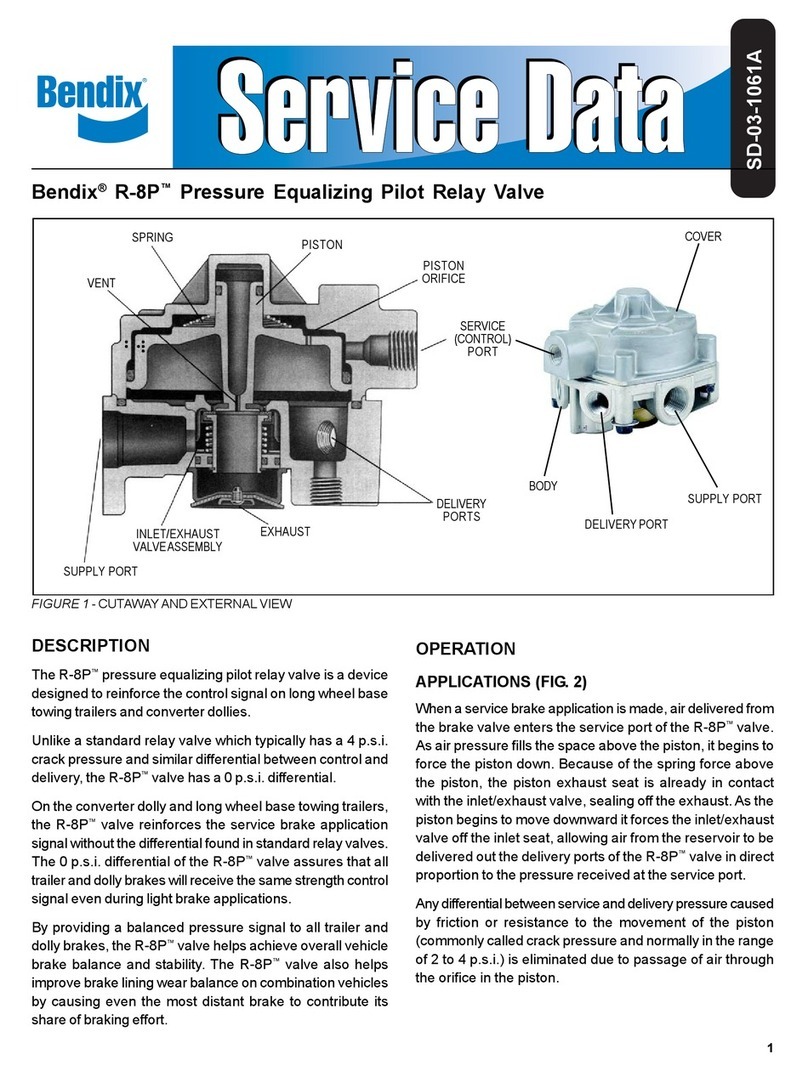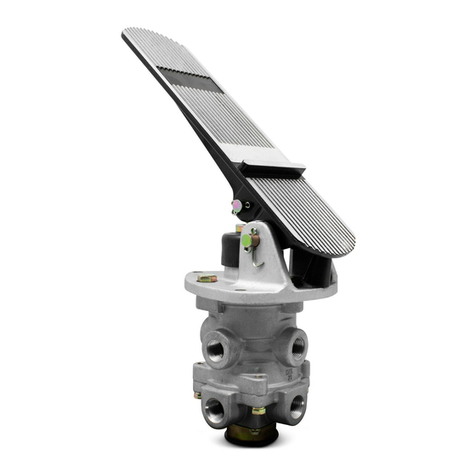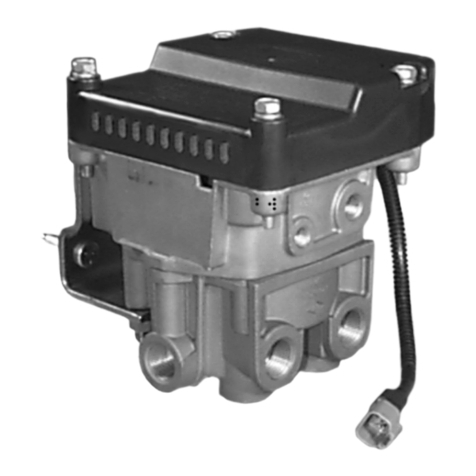
2
OPERATION
Reference Figure 2, the LQ-2™limiting and quick release
valveandtheTW-1™controlvalveareconnectedtoaservice
applicationline:one connection istothe supply (top)portof
the limiting and quick release valve; the other is to the inlet
portof the two-waycontrol valve. Thedelivery linefrom the
two-waycontrolvalveisconnectedtothecut-out valve(side)
portof the limiting and quickrelease valve.
DRYROADPOSITION
WiththehandleoftheTW-1™controlvalveinthe“DryRoad”
position,the valve isinthe “on”positionand airispermitted
topassthrough thevalve.
Whenafootbrakevalveapplicationismade,airflowsthrough
theTW-1™controlvalveandentersthesideportofthelimiting
and quick release valve. At the same time, air also enters
the top inlet port; thus pressure acts upon the top and side
areas of the piston, moving the piston down, seating the
exhaust valve, closing the exhaust port. At the same time
the inlet valve opens and air is delivered out the delivery
ports, to the chambers.
When the air pressure beneath the piston (and in the
delivery lines) equals the air pressure being delivered by
thefoot valve,the pistonraises slightly and closes the inlet
valve. When the foot valve application is released, the air
on the top and side areas of the piston is exhausted back
throughthe footvalve;airpressurebeneaththepistonraises
it,andtheexhaustvalveopensallowingtheairinthedelivery
linesto exhaust outthe exhaust port.
SLIPPERY ROAD POSITION
Withthe handle of the TW-1™control valve in the“Slippery
Road” position, the valve is in the “off” position; the inlet
valve is seated and the exhaust is open. In this position air
isnot permitted to pass through the valve.
When a foot brake application is made, air enters only the
topinlet port. (Airdoes not enterthe side inletport because
the TW-1™control valve is “off”.) Air pressure is effective
onlyonthe upper innerarea of thepiston;the piston moves
downandtheexhaustvalveseatsandtheinletvalveopens.
Airpressureinthe delivery lineactsonthe lower areaofthe
piston,which is abouttwice the sizeof the upperinner area
ofthepiston. Thus, when the pressure acting upon thelower
areaisabout half ofthe brake valvedeliveredpressure, the
pistonlifts and closesthe inletvalve. In thisposition, theair
pressure in the brake chambers is approximately 50% of
brakevalveapplicationpressure.
WARNING! PLEASE READ AND FOLLOW
THESE INSTRUCTIONS TO AVOID
PERSONAL INJURYOR DEATH:
When working on or around a vehicle, the following
general precautions should be observed at all times.
1. Park the vehicle on a level surface, apply the
parking brakes, and always block the wheels.
Always wear safety glasses.
2. Stop the engine and remove ignition key when
working under or around the vehicle. When
working in the engine compartment, the engine
should be shut off and the ignition key should be
removed. Where circumstances require that the
enginebeinoperation,EXTREMECAUTIONshould
be used to prevent personal injury resulting from
contact with moving, rotating, leaking, heated or
electrically charged components.
3. Do not attempt to install, remove, disassemble or
assemble a component until you have read and
thoroughly understand the recommended
procedures. Useonly the proper tools and observe
all precautions pertaining to use of those tools.
4. If the work is being performed on the vehicle’s air
brake system, or any auxiliary pressurized air
systems,make certain to drain theairpressure from
all reservoirs before beginning ANY work on the
vehicle. If the vehicle is equipped with an AD-IS™
air dryer system or a dryer reservoir module, be
sure to drain the purge reservoir.
5. Following the vehicle manufacturer’s
recommendedprocedures,deactivate the electrical
system in a manner that safely removes all
electrical power from the vehicle.
6. Never exceed manufacturer’s recommended
pressures.
7. Never connect or disconnect a hose or line
containing pressure; it may whip. Never remove a
component or plug unless you are certain all
system pressure has been depleted.
8. Use only genuine Bendix®replacement parts,
components and kits. Replacement hardware,
tubing, hose, fittings, etc. must be of equivalent
size, type and strength as original equipment and
be designed specifically for such applications and
systems.
9. Components with stripped threads or damaged
parts should be replaced rather than repaired. Do
not attempt repairs requiring machining or welding
unless specifically stated and approved by the
vehicle and component manufacturer.
10. Prior to returning the vehicle to service, make
certain all components and systems are restored
to their proper operating condition.
